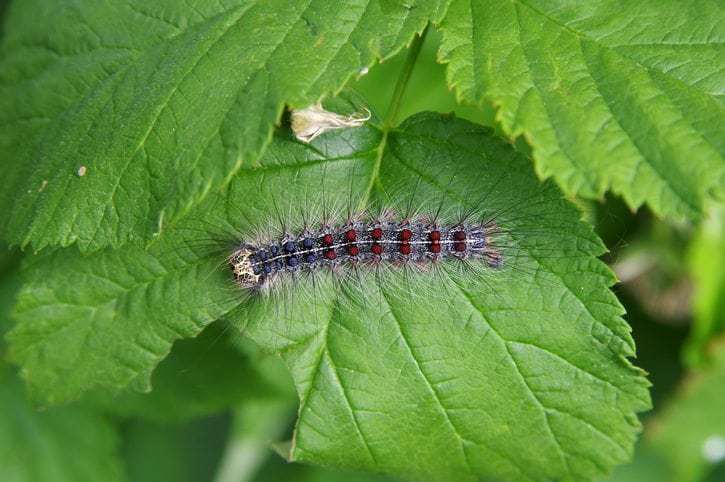An unwelcome visitor has returned to Connecticut – the gypsy moth caterpillar. And with them come an annoying and itchy (if relatively harmless) contact dermatitis, or rash.
Larvae of gypsy moth caterpillars hatch in early spring, drop from tree branches and are blown by the wind. All too often, they miss their tree landings and come to rest on unwitting humans. Avoiding gypsy moth caterpillars is the best way to prevent the rash, but sometimes people don’t even recall being in contact with one.
“Being outside in the warm weather, it’s hard to avoid the gypsy moths,” said Backus Hospital’s Dr. Robert Sidman. “You can get hives and itching, but it’s not contagious between humans.”
Last year, more than 204,000 acres were defoliated by gypsy month, with many trees stripped completely of leaves, according to the Connecticut Agricultural Experiment Station. Middlesex, New London and Windham counties were particularly hard hit. In 2015, about 180,000 acres were defoliated by gypsy moth in the state. The damage, though substantial, pales next the outbreak in the 10970s and 1980s that affected between 800,000 and 1.5 million acres.
But the rash experienced by some humans not the result of a bite. You can blame the caterpillar’s bristly hairs for that. According to the New England Journal of Medicine, histamine found in the caterpillar’s hair causes the red, itchy bumps to form.
“It’s a hypersensitivity reaction, or a skin reaction, from the gypsy moth caterpillars,” said Hartford Hospital‘s Dr. Michele Petrucelli. “They have those little hairs, or spicules, that can lie on your skin if (a caterpillar) is crawling on you.”
“This year, there are a lot of caterpillars, and when they are “en masse,” their spicules can land on your towel, your coat, or your blanket at a picnic, and you can end up with a gypsy moth rash,” said Dr. Petrucelli.
To say nothing of the kids simply picking them up and having them crawl all over their hands and arms. Cute? Yes, but risking the itch may not be worth it to many parents, and some school systems have reportedly held recess indoors – even on nice days – to avoid dealing with the possibility of a rash in their student populations.
Dr. Petrucelli also warns that very young children (the ones who still put everything in their mouths) may be tempted to try a gypsy moth, too, which can lead to dangerous tongue swelling – enough to restrict breathing and require emergency medical attention.
But don’t worry, gypsy moth caterpillar season ends about the time the kids go back to school – in the fall.
Still worried about that rash? Hartford HealthCare-GoHealth Urgent Care can help you with identifying and treating all sorts of rashes.
Freelance reporter Amy Domeika contributed to this story.

